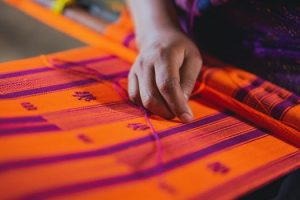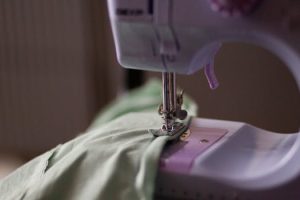Sustainable Fashion Technologies Eliminate Environmental Waste Completely
The fashion industry has often been criticized for its negative impact on the environment. From pollution caused by textile production to the massive amounts of waste generated by fast fashion, the industry has a long way to go when it comes to sustainability. However, with the advancement of technology, new solutions are emerging that aim to eliminate environmental waste completely. In this article, we will explore the role of sustainable fashion technologies in reducing the fashion industry’s impact on the environment and how they can help us create a more sustainable future for fashion.
The Problem of Environmental Waste in the Fashion Industry
The fashion industry is one of the biggest polluters in the world, second only to the oil industry. According to the United Nations Environment Programme, the industry is responsible for about 10% of global carbon emissions and consumes more energy than the aviation and shipping industries combined. Moreover, the production of clothing materials, such as cotton, requires vast amounts of water and pesticides, causing significant damage to the environment.
But perhaps the most alarming issue is the massive amount of waste generated by the fashion industry. The rise of fast fashion, where clothes are produced quickly and cheaply, has led to a culture of overconsumption and disposal. It is estimated that the fashion industry produces 92 million tons of waste every year. This waste is not only unsustainable, but it also contributes to various environmental issues, including water and air pollution, landfill overflow, and ocean pollution.
The Rise of Sustainable Fashion Technologies
Thankfully, in recent years, there has been a significant shift in the fashion industry towards sustainability. Many brands are now embracing sustainable practices, such as using organic and recycled materials, reducing waste, and promoting fair labor practices. However, the real game-changers are the emergence of sustainable fashion technologies.
These technologies use innovative and eco-friendly techniques to transform the fashion industry. They aim to alleviate the negative impact of clothing production on the environment and promote a circular fashion economy, where materials are reused, recycled, and regenerated. Let’s take a look at some of the most exciting sustainable fashion technologies currently being developed.
1. 3D Printing
3D printing has been around for a while, but its potential in the fashion industry has only been recently explored. The technology uses computer-aided designs and machine-operated printers to create 3D objects using various materials. In fashion, 3D printing is used to create garments, shoes, and accessories without generating any waste. The production process is entirely sustainable, using only the amount of material needed, and scraps can be reused to create new products.
2. Biodegradable Materials
Many fashion brands are now turning towards biodegradable materials as an alternative to traditional fabrics, such as cotton and polyester, which can take hundreds of years to decompose. Biodegradable materials are made from eco-friendly sources, such as organic cotton, bamboo, and pineapple leather, and are designed to break down naturally after use, leaving no harmful residue behind.
3. Nanotechnology
Nanotechnology is another innovative solution being used to create sustainable fashion. It involves manipulating materials at the molecular level, creating fabrics with enhanced properties, such as self-cleaning, water-resistant, and lightweight. These fabrics are durable, require minimal processing, and have a significantly lower impact on the environment.
The Benefits of Sustainable Fashion Technologies
The use of sustainable fashion technologies brings many benefits, not only to the environment but also to the fashion industry and consumers. Here are some of the most significant advantages of these technologies.
1. Reduced Environmental Impact
By using sustainable fashion technologies, the fashion industry can significantly reduce its negative impact on the environment. From reducing carbon emissions and waste to conserving water and using eco-friendly materials, these technologies play a vital role in creating a more sustainable fashion industry.
2. Increased Efficiency
Sustainable fashion technologies also promote efficiency in the production process. Technologies like 3D printing and nanotechnology are more precise, require less energy and materials, and can produce higher quality products. This means less waste and a more sustainable use of resources.
3. Better Quality Products
Many sustainable fashion technologies also result in higher quality products. For example, nanotechnology creates fabrics that are more durable, resistant, and comfortable. Moreover, sustainable materials like organic cotton and bamboo are hypoallergenic and better for the skin.
The Future of Sustainable Fashion
With the continued development and implementation of sustainable fashion technologies, the future of the fashion industry is looking brighter. We can expect to see more sustainable materials, more efficient production processes, and a shift towards a more circular economy. Furthermore, as these technologies become more mainstream, we can hope for more affordable and accessible sustainable fashion options for consumers.
In conclusion, sustainable fashion technologies are essential in eliminating environmental waste completely in the fashion industry. They offer innovative and eco-friendly solutions that have the potential to transform the way we produce and consume fashion. As consumers, we have the power to support and demand more sustainable practices from the fashion industry. By choosing brands that embrace sustainable fashion technologies, we can all play a crucial role in creating a more sustainable future for fashion.











